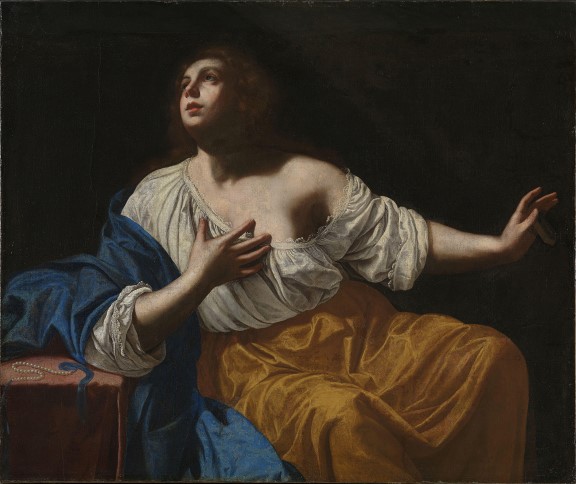
Conservator Sherlock Holmes
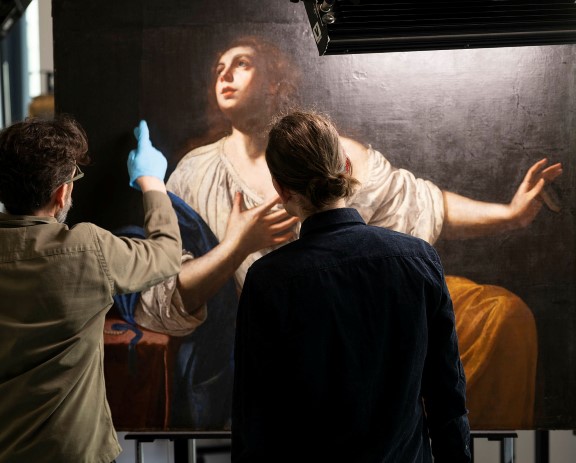
Artemisia Gentileschi
- Artemisia Gentileschi was born in Rome on 8 July 1593.
- She grew up in the home and studio of her father, Orazio Gentileschi, in Rome, as the eldest of five siblings.
- She was apprenticed to her father and it is assumed that they also painted together.
- She lived and painted in Rome, Florence, Venice, London and Naples.
- She became the first woman to become a member of the "Accademia del Disegno" in Florence in 1616.
- Gentileschi did not sign or date all of her works. Many paintings are therefore attributed to her on the basis of the style, which is not unusual when one is trying to find out the origins of older visual art.
In the National Museum, you will find four works that were painted in whole or in part by Artemisia Gentileschi, or attributed to her, in addition to a work that may have been painted by her. Further research will be conducted on some of these paintings. - Judith and her Maidservant with the Head of Holofernes (by Orazio Gentileschi, with Artemisia attributed as assistant), around 1608–1612, gift from A. M. Vik, Blomqvist Kunsthandel in 1945
- Saint Catherine of Alexandria, 1614/15, private loan
- The Penitent Mary Magdalene, around 1640, gift from Betsy Cappelen in 1866.
- Judith and her Maidservant with the Head of Holofernes, 1639 or 1640, long-term loan from The Savings Bank Foundation DNB in 2022
- The Interrupted Rendezvous (attributed to Rutilio de Lorenzo Manetti), year unknown, purchased by Joachim Frich in 1840, recently proposed to be attributed to Artemisia Gentileschi by the Baroque specialist Gianni Papi in Storia dell'arte.
- It is assumed that she died in Naples in 1654, but both the date and place of burial are uncertain.
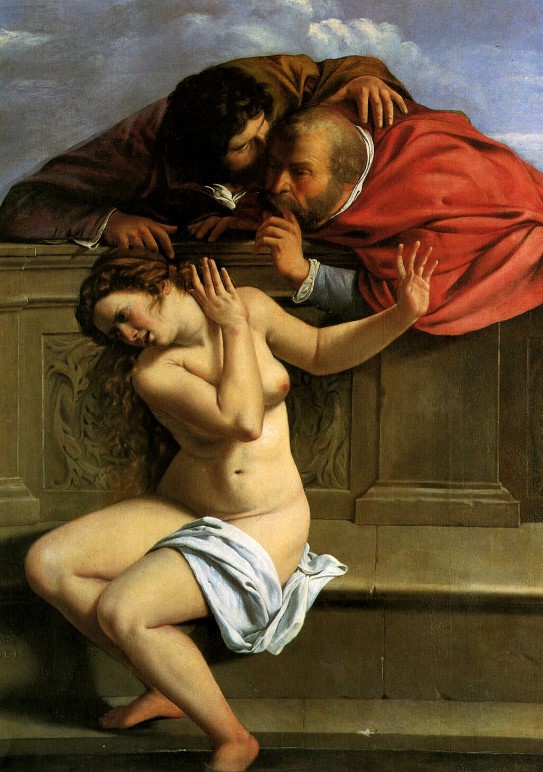
Senior Curator Learning at the National Museum, Ellen Lerberg, tells of a time when the non-reformed church placed great emphasis on the importance of images in the worship of God. At the ecumenical Council of Trent, held between 1545 and 1563, the church highlighted the art of painting as a means of highlighting biblical stories which, among other things, dealt with good morals.
– In line with the Council's guidelines, generations of artists in Catholic countries and areas painted such works of art for the Church, but also for private collectors.
Artemisia Gentileschi specialised in this form of prestigious narratives and motifs. She chose strong women from the Bible or history. An example is her portrayal of Susanna and the Elders, which she painted when she was 17, in 1610.
– The painting shocks me, says Gram Bischoff.
She considers the painting to be one of the strongest and most interesting in the history of art, because of both the motif and the painterly execution.
– Susanna is portrayed as vulnerable and strong at the same time, says Gram Bischoff, who believes that Gentileschi's paintings have a special sensitivity and offer both psychological insight and narrative technique.
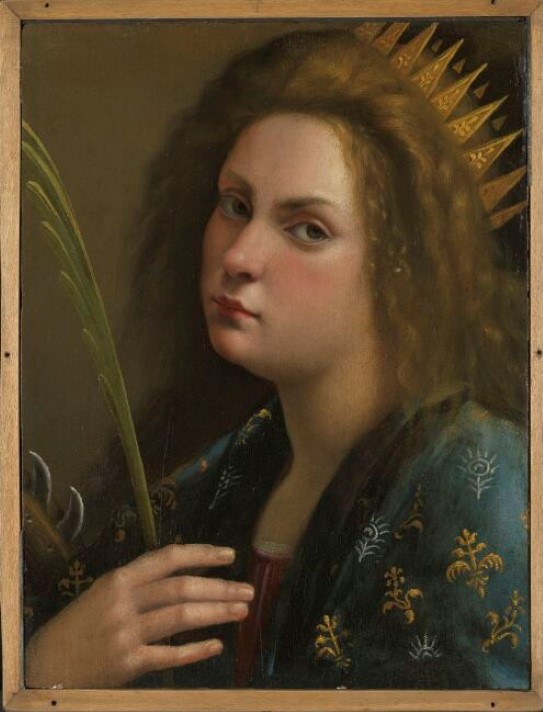
Artemisia's place in the world in 2023
Artemisia often included herself in her paintings. This may have been because of a lack of other models. In the literature on the artist, a distinction is made between pure self-portraits and a form of self-representation. We can see Artemisia herself in Self-Portrait as Saint Catherine. Gram Bischoff also recognises traits in The Penitent Mary Magdalene and Judith and her Maidservant with the Head of Holofernes.
– Why she so often seems to have painted in her own facial features is much debated. The number of self-portraits may mean that these paintings were in particular demand. There are many indications that she used the pictures deliberately as self-promotion. This may also show that she identified with the fates of the women in the motifs, says Gram Bischoff.
This may also be due to the fact that Artemisia, like other women who painted at this time, often did not have access to models other than herself, according to Ellen Lerberg.
There is much we do not know about Artemisia Gentileschi's life or about who commissioned her works.
– New archival finds, laudatory referrals in contemporary biographies, correspondence and admiring poems in her honour show how well-known and recognised she was in her time, says Gram Bischoff.
Artemisia at the National Museum
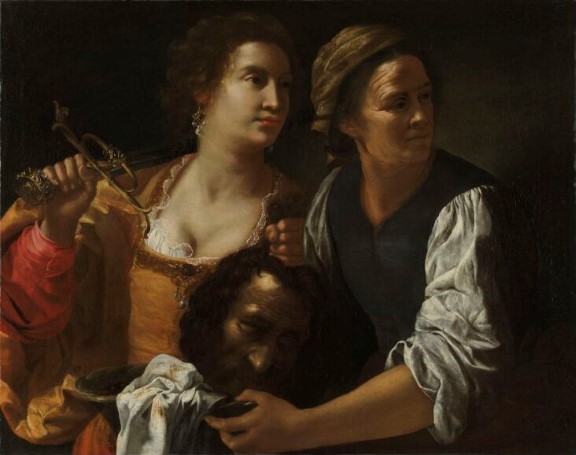
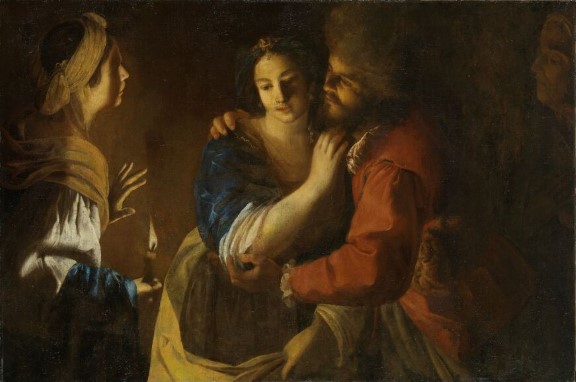
Paintings conservation
- At the National Museum, the conservators specialise in either objects, textiles, paper or paintings.
- The National Museum's painting conservators look after over 6 000 paintings, from the 15th century to the present day.
- The works encompass a wide range of materials and techniques.
- The substrate for the paintings ranges from primed canvases and wooden panels, to fibreboard, metal and plastic.
- All art ages over time. This aging and degradation will often result in the painting changing its appearance, often over several years, such as when a pigment bleaches or a varnish yellows. Varnishes are natural or synthetic resins dissolved in solvents that are applied over the paint to both saturate and protect colours.
- Conservation measures can, for example, include strengthening the base material, removing dirt and yellowed varnish or affixing loose paint.